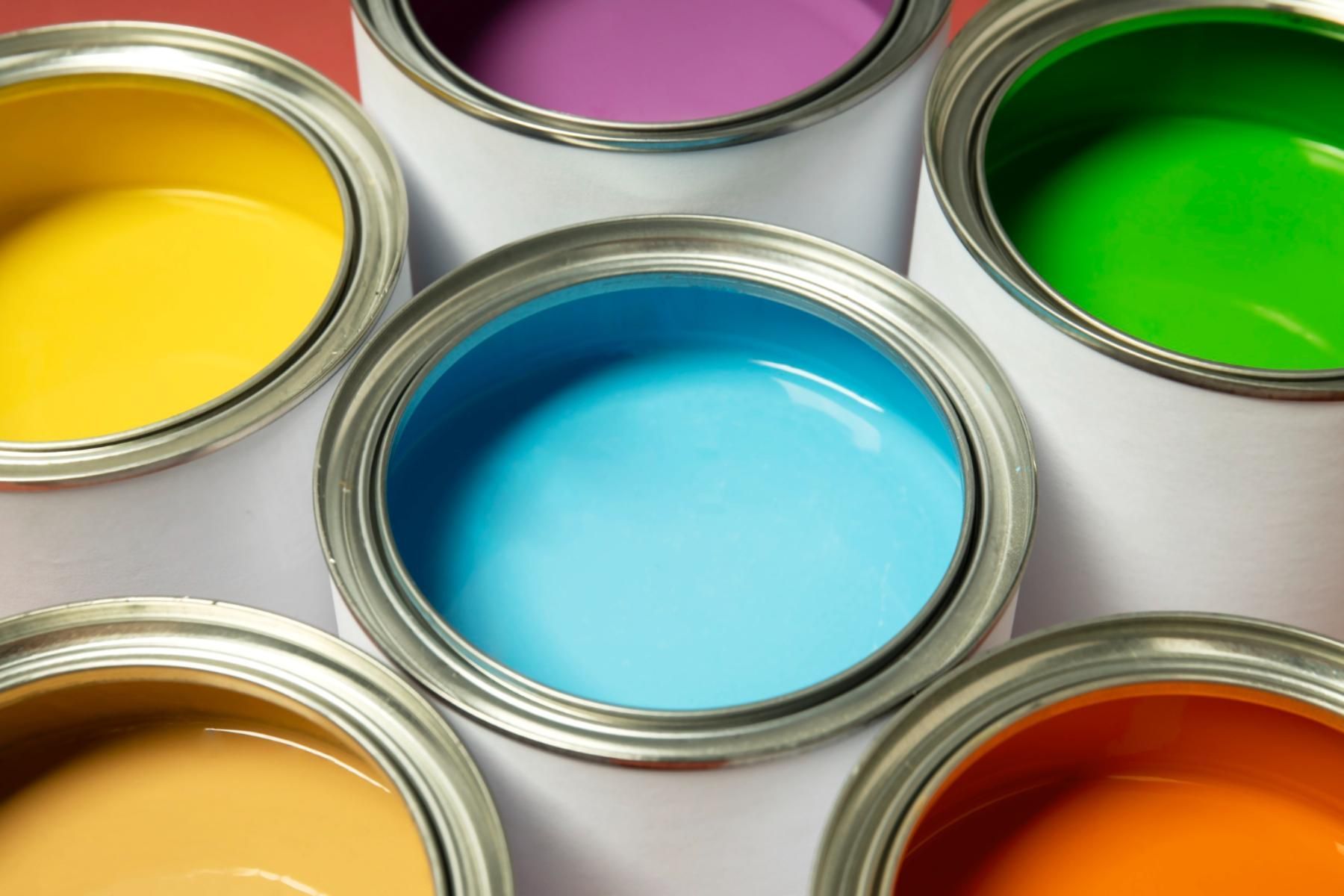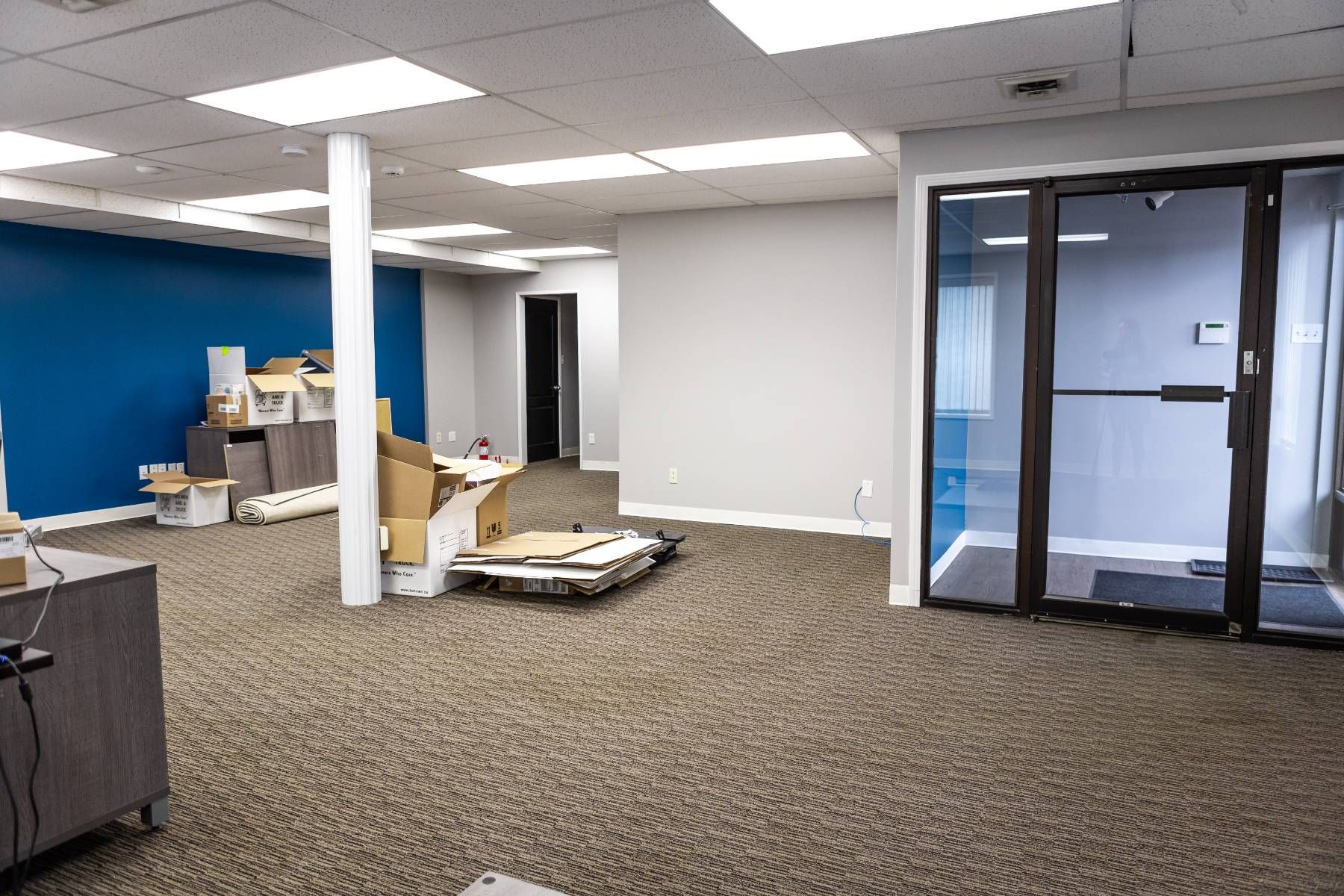Boost Brand Identity
Your business’s brand identity goes beyond logos and taglines. One of the most powerful, yet often overlooked, elements is paint. The colors you choose for your business can significantly impact your customers' perceptions and experiences. In this post, we’ll explore how the right paint choices can enhance your brand identity, with insights into different aspects of your commercial space.
First Impressions Matter: Entrance and Lobby Colors
When customers walk through your doors, the entrance and lobby colors are the first things they notice. These initial impressions set the tone for their entire experience with your business. Imagine walking into a bright, welcoming lobby versus a dull, uninspiring one. The colors you choose can create a sense of excitement, warmth, or even tranquility, depending on your brand's personality. For instance, a tech startup might opt for vibrant, energetic colors to convey innovation and creativity, while a spa might choose calming, natural hues to promote relaxation. By carefully selecting the entrance and lobby colors, you can make a powerful statement about your brand's identity right from the start.
Matte vs. Glossy Finishes in Retail Spaces
Choosing between matte and glossy finishes can significantly impact the appearance and feel of your retail space. Matte finishes offer a sophisticated, understated look that can create a sense of elegance and calm. They are great for areas where you want to avoid glare and reflections, providing a soft, muted backdrop that allows your products to take center stage. Matte finishes are also excellent for hiding imperfections on walls, giving your space a flawless, professional appearance.
On the other hand, glossy finishes add a touch of glamour and energy to your retail space. They reflect light, making the room appear brighter and more vibrant. Glossy finishes are ideal for highlighting specific areas or features, such as product displays or focal walls. However, they can also reveal imperfections, so it's important to ensure that the surfaces are well-prepared before applying a glossy finish. By carefully considering the atmosphere you want to create and the practical implications, you can choose the perfect finish to enhance your retail environment.
Light-Reflective Paints: Maximizing Energy Efficiency in Commercial Spaces
Light-reflective paints are a smart choice for maximizing energy efficiency in your commercial space. These paints contain special pigments that reflect more light than standard paints, making your space appear brighter without the need for additional lighting. By increasing the natural and artificial light in your environment, you can reduce the reliance on electrical lighting, lowering your energy consumption and costs. This not only benefits your bottom line but also demonstrates your commitment to sustainability.
In addition to their energy-saving benefits, light-reflective paints can create a more pleasant and productive work environment. A brighter space feels more open and welcoming, boosting the mood and productivity of both employees and customers. When choosing light-reflective paints, consider the color as well as the reflective properties. Lighter colors tend to reflect more light, so opting for shades of white, cream, or pale pastels can further enhance the effect. By incorporating light-reflective paints into your commercial space, you create an environment that is both energy-efficient and aesthetically pleasing.
Textured Coatings: Adding Depth to Office Environments
Textured coatings offer a unique way to add depth and interest to your office environment. Unlike flat paints, textured coatings create a three-dimensional effect that can transform a plain wall into a dynamic feature. These coatings come in a variety of finishes, from subtle stucco textures to bold, sculptural effects, allowing you to customize the look to suit your brand's personality. Textured coatings can also help to hide surface imperfections, providing a durable and attractive finish that stands up to the wear and tear of a busy office.
In addition to their aesthetic appeal, textured coatings can also enhance the acoustics of your office. The irregular surfaces of textured walls can help to absorb sound, reducing noise levels and creating a more comfortable work environment. This is particularly beneficial in open-plan offices where controlling noise can be challenging. By incorporating textured coatings into your office design, you not only create a visually interesting space but also improve the overall functionality and comfort of the environment.
High-Quality Commercial Painting for Lasting Impressions
Investing in high-quality commercial painting is essential for creating a lasting impression. High-quality paints and finishes not only look better but also last longer, reducing the need for frequent repaints and maintenance. This is particularly important in high-traffic areas where wear and tear can quickly take a toll on the appearance of your space. By choosing durable, high-quality paints, you ensure that your commercial space remains fresh and professional for years to come.
In addition to durability, high-quality paints also offer superior color retention and coverage, providing a more vibrant and consistent finish. This is vital for maintaining the visual identity of your brand across different spaces and over time. By investing in high-quality commercial painting, you not only enhance the appearance of your space but also demonstrate your commitment to excellence and sustainability.
Incorporating Brand Colors into Functional Areas
Incorporating your brand colors into functional areas is a powerful way to reinforce your brand identity. Whether it's the break room, conference rooms, or even restrooms, using your brand's colors consistently across these spaces helps to create a unified and cohesive look. This not only enhances the overall aesthetic of your commercial space but also makes a strong visual statement about your brand's values and personality.
Functional areas are often overlooked when it comes to design, but they offer a great opportunity to showcase your brand in unexpected ways. For example, you could use your brand's primary color on an accent wall in the break room or incorporate your logo's colors into the design of your conference room. These small touches can make a big impact, creating a memorable and engaging environment for both employees and customers. By thoughtfully incorporating your brand colors into functional areas, you create a space that truly reflects your brand's identity and values.
Discover the Value of Expert Commercial Painting with Revive Painting
If you're ready to take your business to the next level with a fresh, impactful look, there's no better time than now. At Revive Painting, we understand how important the right colors are in creating a memorable first impression, enhancing productivity, and reinforcing your brand identity. Our team of professional commercial painters is dedicated to delivering top-quality results that add significant value to your retail space, office, or any commercial space you need to revamp. From choosing the perfect shades to meticulous application, we ensure your business stands out and leaves a lasting impression. Contact us today to start transforming your space with expert painting solutions tailored to your brand’s unique personality.



